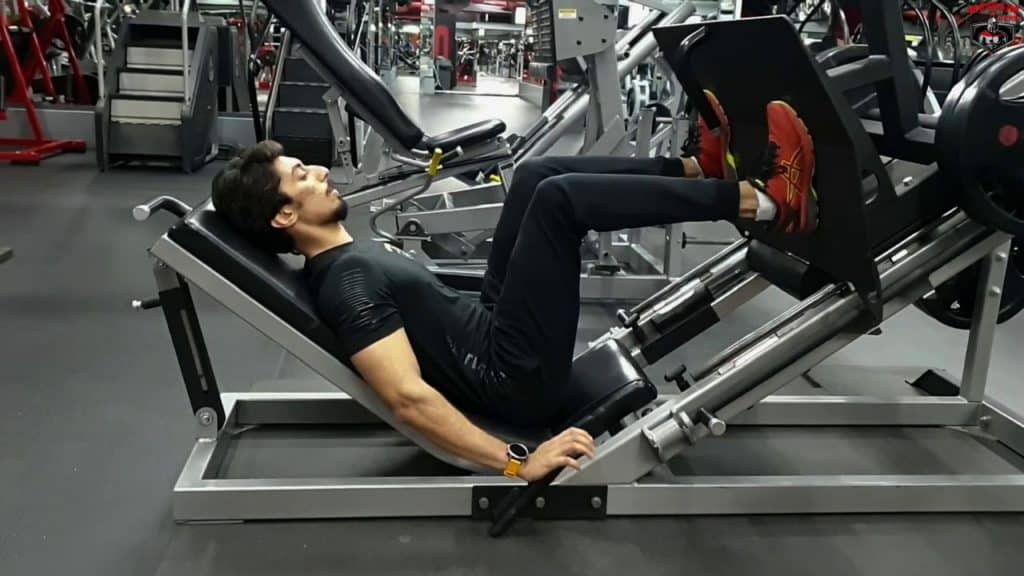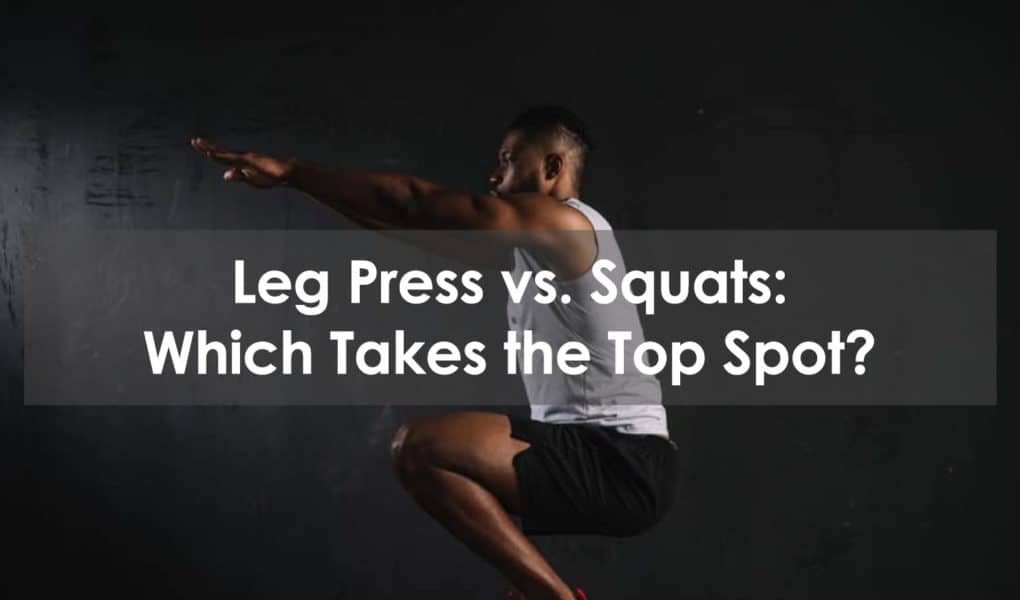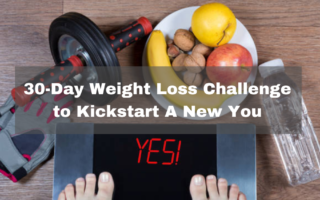Assuming you don’t skip leg day, you’re probably familiar with some variations of squats and leg presses. Whether it’s kettlebell goblet squats, heavy 45-degree press, or just some air squats at home, these are the fundamental compound movements for the lower body.
But which move is better overall? This article aims to find out by analyzing each exercise, their pros and cons, and putting them head-to-head in several common categories.
Leg press

Leg presses are a lower body strength exercise performed on leg press machines. There are two main types of this equipment: seated leg press machines – which can be pin-loaded or plate-loaded; and 45-degree leg press machines, which place the user at a lower angle.
Leg presses involve placing the feet on a large platform and pressing the weight away from the body. Leg presses are open chain movements, meaning the body is fixed, and the feet move the weight.
Leg presses utilize all the major muscle groups of the lower body and are one of the fundamental leg strength exercises.
Pros of the Leg Press
The leg press exercise is a great addition to your leg workout for several reasons. First, it’s easier to load the glutes, quads, and hamstrings with less risk of injury.
Second, for body composition, the leg press is a great way to stimulate the required hormonal responses to achieve muscle growth and burn fat.
Finally, the different leg press variations through various foot placements are an efficient method of targeting different leg muscles.
For example, you can perform a narrow stance variation to increase the effective load on your vastus medialis, which can grow muscle mass and help prevent knee injuries. Alternatively, a wide stance will place the nominal load onto the vastus lateralis as you work to keep the knees out.
Cons of the Leg Press
The seated position of these lifts make them less athletic movements. While great for muscle hypertrophy, this type of body movement doesn’t translate as well to functional movements.
Leg presses also achieve smaller overall amounts of muscle activation than squat variations, because they don’t utilize the upper body as standard squats do.
Squats

Squats are one of the first exercises to be included in a full-body workout, for good reason! In fact, there are entire strength training programs built around the squat.
Squats are a fundamental human movement, and involve movement at the ankle, knee, and hip, to essentially sit down and stand up.
This exercise can be performed with any type of equipment, from a goblet squat with a kettlebell to powerlifting and strength variations with barbells or dumbbells.
Pros of Squats
Squats don’t technically need any equipment. A bodyweight squat is a great aerobic exercise for your heart health, with a low potential for injury.
Squats have one of the highest levels of overall muscular activation from any exercise. With load indexes off the charts for levels of glute and quad activation, it’s no wonder squats are so great for promoting muscular growth.
Squats recruit more motor units and supporting muscles than machine weight exercises. While weighted squats have potentially a higher chance of injury than a controlled machine, they also need to be incorporated into at least a couple of workouts per week to train balance and coordination.
Squat strength is functional strength. The muscular strength gained with squats directly translates to many daily activities, such as getting out of bed, off the toilet, and in and out of chairs.
For athletes, squats are better at activating muscle recruitment of synergist muscles. This helps boost jump performance, hip strength, and metabolic response. Effective squat training is also paramount to injury prevention.
Squats are a reactive strength exercise, combining quad strength with the core muscles in an all-encompassing muscle activity pattern that is hard to replicate with other compound movements.
Cons of Squats
Despite being such an important type of exercise, squats actually have a very complicated movement pattern. This resistance exercise can require dozens of technique variations and functional development to one’s mobility before it is mastered.
From foot position to glute activation and knee biomechanics, the functional outcomes of squats are only good when this technique is practiced and mastered.
Squats also have a higher potential injury risk if there is a muscular imbalance between the primary movers, for example, if the hip extensors try to take over the quads; or if a heavy weight increases spinal loading rather than being spread evenly across the entire body.
Heavy squats often require a training partner to perform safely, which is also why they are often used in rehabilitation settings, where the practitioner can observe and support the individual.
Leg Press vs. Squat for Athletes
Athletes in most sports need a balanced foundation of strength, power, agility, balance, and coordination. So which of these two exercises provide the biggest benefit?
Of the two moves, the squat is the more functional. With more muscle coordination and greater range of motion, the squat is the basis for many two-legged athletic movements – such as a jump shot in basketball, a block in volleyball, or a jerk in Olympic lifting.
The leg press can still be of use for athletes, however. It’s a safe way to prioritize certain lower leg muscles if they are lacking or causing muscle imbalances. It’s also easier to lift more weight safely, allowing the athlete to build strength or mass should their sport require it.
Winner: Squats
Leg Press vs. Squat for Bodybuilders
Bodybuilders have slightly different goals than other athletes: depending on their competition category, they need to build as much muscle mass as possible, in the correct proportions to achieve the highest score from the judges.
Bodybuilders do use squats as a way to stimulate a large hormonal response. Because squats use so many muscles at the same time, they cause a huge release of testosterone and growth hormone to recover. This creates the perfect anabolic environment to promote lean muscle hypertrophy.
That being said, bodybuilders need to shape their muscles in an aesthetic way, not just grow them. The many variations of the leg press allow them to do just that while achieving a much higher intensity and volume than they could get from squats.
While bodybuilders will often use both of these exercises in their programs, the leg press has a slight advantage for its safety and ability to accommodate more weight and target different muscles in the leg.
Winner: Leg press
Leg Press vs. Squat for Weight loss
Why is this category here? You might think big compound resistance exercises are the last thing you’d want to do to lose weight. However, a small increase in muscle mass actually raises your resting metabolic rate, allowing you to burn more fat even at rest!
There are no better exercises for this than the squat and leg press. They require a lot of energy to perform, and they train the biggest muscles in your body. That’s more calories burnt in less time working out, AND more muscle to burn that pesky body fat.
This category is tough to find a clear advantage for either leg presses or squats. Both moves can be programmed in a way to achieve weight loss. This might involve doing bodyweight squats for several sets of 30+ reps, for example.
Another method could be to do heavy leg press for 5×5, stimulating the nervous system to increase motor unit recruitment, to get stronger without increasing the size of the hips or thighs.
Overall, weight loss is about creating a calorie deficit, maintaining energy-burning muscle mass and strength, and slowly but consistently using more energy than you consume. Both squats and the leg press can be great tools in your arsenal for this purpose!
Winner: Tie!
Conclusion
Both squats and leg presses are amazing exercises. Depending on your goals, you may find that one benefits you more than the other. That being said, there aren’t many cases where both can’t be included in your overall regime!
If you need help with trying either exercise, you can check out our articles going in-depth on their setup, technique, and variations.
Frequently Asked Questions
Why is leg press easier than squats?
Leg press machines are simpler to use than squats because the machine does part of the work for you. The backrest stabilizes and supports your upper body, while the rails guide the weight along the correct plane of motion.
This alleviates some of the strain and energy required for balance and coordination. Squats, on the other hand, are a free-weight exercise. A barbell squat, for example, requires a lot more technique and coordination to balance the weight as you go through the movement.
Both exercises require good technique to avoid injury. The leg press just makes things a little easier by assisting you throughout the movement.
Why can I leg press more than I can squat?
As mentioned above, the leg press helps guide the movement of the legs. The leg press also doesn’t have the same range of motion as a squat, with less hip extension required at the top of the movement.
A lot of why one can lift more weight on a leg press has to do with the back. Your back is supported in the leg press machine, meaning your spine and upper body don’t have to support the weight. Your legs can be stable as they do all the pushing.
The amount of weight on a leg press machine requires a lot more effort to lift in a squat movement. The balance, upper body, core, and back involvement simply add to the effort required to shift the weight.
What is a good weight for leg press?
This depends on your gender, body weight, and training level. Some general guidelines for males are 1-1.2 x bodyweight for a beginner, 2-3 x bodyweight for intermediate, up to 5 x bodyweight for very elite lifters.
These generalized numbers for females are 0.6-1 x bodyweight for beginners, 2-3 x for intermediate, and 4 x for elite athletes.
Some examples:
200 lb. male: Beginner = 250 lb.; Intermediate = 550 lb.; Elite = 1000 lb.
170 lb. female: Beginner = 120 lb.; Intermediate = 350 lb.; Elite = 700 lb.







